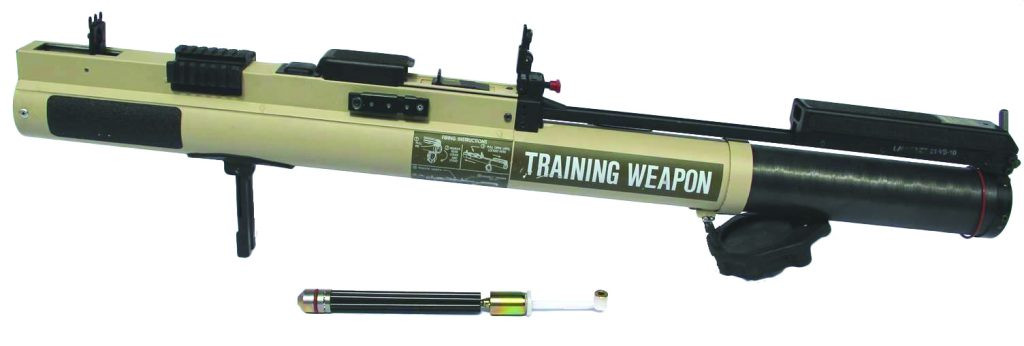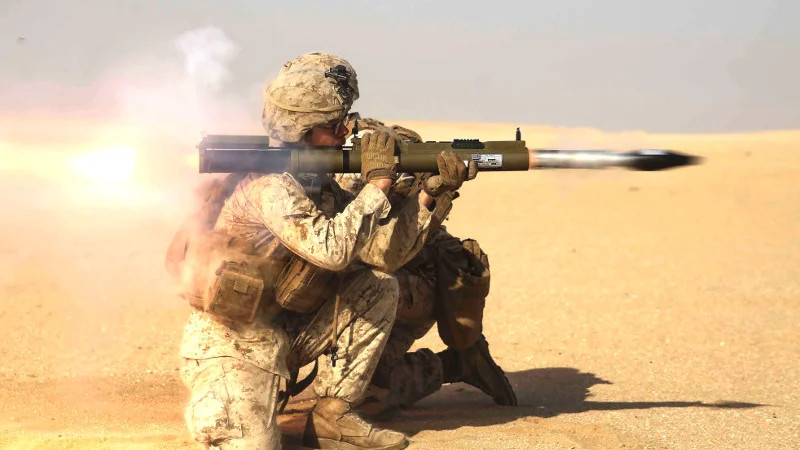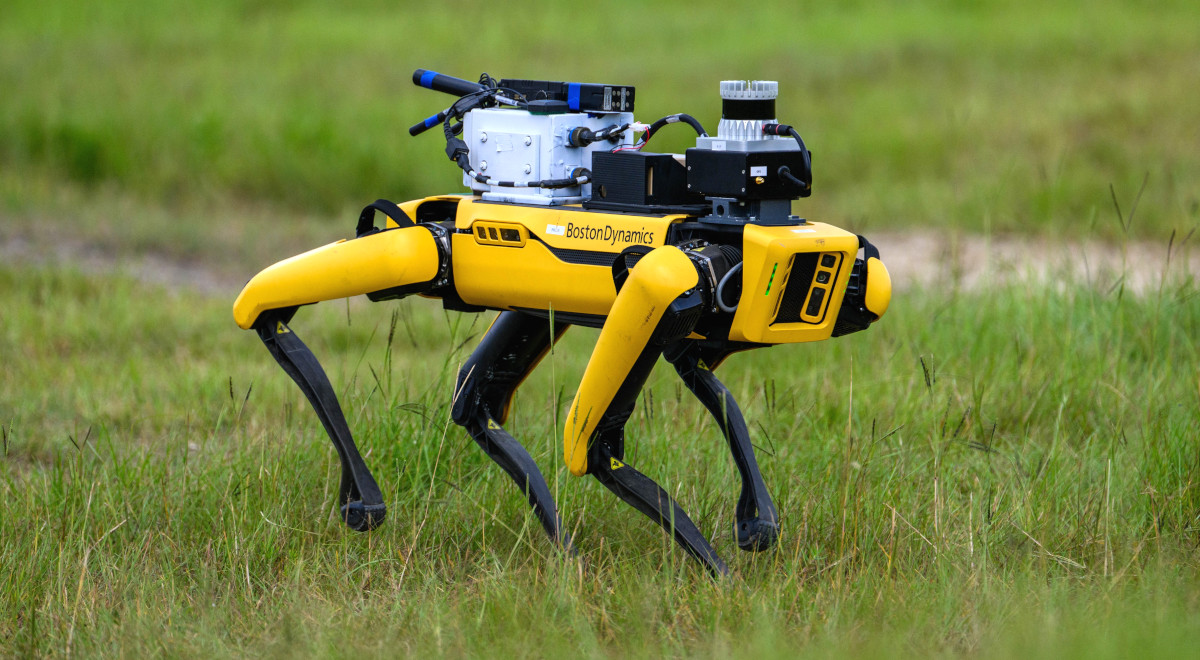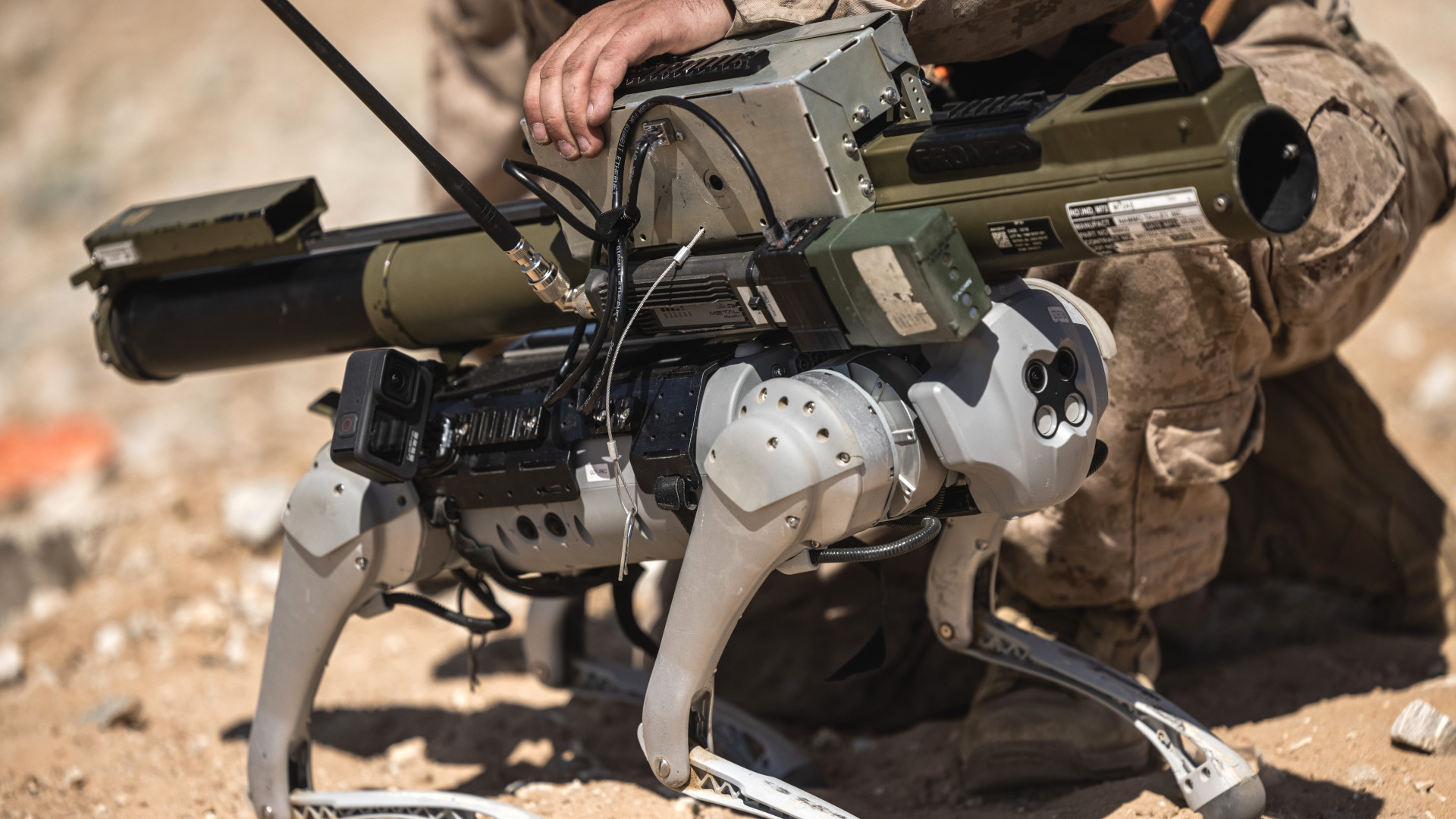The U.S. Marine Corps recently tested a robot dog toting a training version of the M72 infantry anti-armor rocket launcher. This is the latest example of growing interest in the U.S. and foreign militaries forces, especially the Chinese and Russian armed forces, in the idea of arming four-legged uncrewed ground systems. In fact, the Marine design looks to be based on a similar, if not identical Chinese-made commercial-of-the-shelf quadrupedal robot that has emerged in anti-armor rocket launcher and submachine gun-armed configurations in Russia in the past.
Members of the Marine Air Ground Task Force Training Command’s (MAGTFC) Tactical Training and Exercise Control group (TTECG), based at the Marine Corps Air Ground Combat Center at Twentynine Palms in California, tested the robot dog back in September. Members of the U.S. Navy’s Office of Naval Research (ONR) were also involved in what was described as a proof-of-concept demonstration.

Specific details about the Marine Corps’ robot dog and its capabilities are limited. The War Zone has reached out to the Marine Corps for more information.
However, pictures and videos that the Marine Corps has released, seen earlier in this story, show that the underlying quadrupedal robot is a Chinese-made Unitree Go1, which is readily available for purchase online, including through Amazon. Unitree’s website offers the baseline Go1 Air for $2,700 and the Go1 Pro, which it says has more capable sensors that it uses for general movement and object recognition, for $3,500.
The video below gives a general sense of the kind of capabilities the commercially-available Go1 offers.

It’s interesting to note that the Marines refer to the design tested last month as a “robotic goat” rather than the far more common robot dog description. It’s unclear why the Marines chose this term instead. One possibility might be that it is in some way related to the Go1’s name.
The weapon system on the robot dog’s back consists of a mount designed to hold and fire an M72-series rocket launcher, as well as a forward-facing GoPro camera offset on the right side. There are rails installed at various points that could be used to mount additional cameras, aiming lasers, and other accessories.
A video from the September test shows the robot dog-mounted launcher being fired without issue, but from a static position with sandbags on either side for safety. Afterward, a Marine is seen removing the launcher from the mount, showing how the system might be reloaded in the field.
An M72AS trainer, which fires a 21mm rocket with a tracer element at the rear, looks to be used in this particular demonstration.

The M72AS is designed to replicate the general feel and performance of a typical M72 firing a 66mm rocket while offering a lower-cost reusable system for use in training. Multiple variants of the M72, the first versions of which were introduced in the 1960s, remain in production today and offer a variety of different capabilities, as you can read more about here. They all come preloaded with a single rocket and the launchers are intended to be discarded after use.

Though the Marine Corps robot dog may only be a proof-of-concept design, the potential value of an armed system like this is clear.
“Instead of having a Marine handle the weapon system, manipulate the safeties, we could put a remote trigger mechanism on it that allowed it to all be done remotely,” Marine Corps 1st Lt. Aaron Safadi, the officer in charge of the emerging technology integration section within TTECG, said in a statement after the September test. “The Marine could be behind cover and concealment, the weapon system could go forward, and the Marine could manipulate the safeties from a safe place while allowing that weapon system to get closer to its target.”
Dismounted attacks on armored vehicles can be very risky, especially in close quarters in urban environments. Being able to get closer to those targets also just increases the chance of scoring a hit. Altogether, finding ways to engage those threats remotely, including via rocket-armed robot dog, makes good sense.

Armed with a rocket launcher or other kinds of weapons, including small arms, a quadrupedal robot could also just be used to scout ahead of friendly forces, and then have the ability to immediately engage any threats it finds.
Uncrewed ground systems like this have the ability to get in and out of spaces where a person might not be able to at all, as well, which could again be particularly useful when maneuvering through dense urban environments. The U.S. military sees operations in large built-up areas as a key component of any future major conflict.
This is, of course, not the first time that the U.S. military has explored the idea of a small armed uncrewed ground vehicle that could accompany even very small units. Designs based on tracked robots primarily designed for explosive ordnance disposal work have been and continue to be developed.

More recently, the idea of arming quadrupedal robots, which offer various advantages over tracked designs when it comes to maneuvering across rough and uneven terrain, as well as up and down stairs, has emerged.
Of specific interest in the context of the Marine Corps’ armed Go1, two configurations using Unitree robot dogs emerged in Russia in last year. One of these was armed with a variant or derivative of the 9x19mm PP-19-01 “Vityaz” submachine gun while the other carried an RPG-26 anti-armor rocket launcher, which is similar in general concept to the M72.
This followed the public debut the year before of a Ghost Robotics’ quadrupedal unmanned ground vehicle (Q-UGV) armed with a 6.5mm Creedmoor assault rifle. The Ghost Robotics Q-UGV is a much more advanced and capable system with a higher degree of autonomy than the commercially available types like the Unitree Go1, as you can read more about here.
Multiple branches of the U.S. military have already begun using unarmed examples of the Ghost Robotics Q-UGV, primarily for scouting and security missions. Examples of Boston Dynamics’ Spot, another broadly similar unarmed robot dog design are also in use within the American armed forces.


China’s People’s Liberation Army (PLA) has also demonstrated a number of armed robot dogs in the past using different underlying quadrupedal designs.

All of this is indicative of a broader and still growing trend in the arming of smaller uncrewed systems, both on the ground and in the air, with small arms and other weapons.
This comes after years of commercial-type quad and hexacopter drones with improvised weaponry, in particular, have been repeatedly shown to be real threats even to nation-state militaries. This has been underscored by the current conflict in Ukraine and was more recently highlighted during the Palestinian terrorist group Hamas’ unprecedented attacks in southern Israel earlier this month.
The Marine Corps test out at Twentynine Palms in September only further makes clear that standing armed forces, including the U.S. military, are taking note of these trends and are looking to operationalize them. While the M72-armed “robotic goat” looks unlikely to enter service in its current form, systems like it look set to become a more common feature in the arsenals of American and foreign security forces.
Contact the author: joe@thedrive.com
